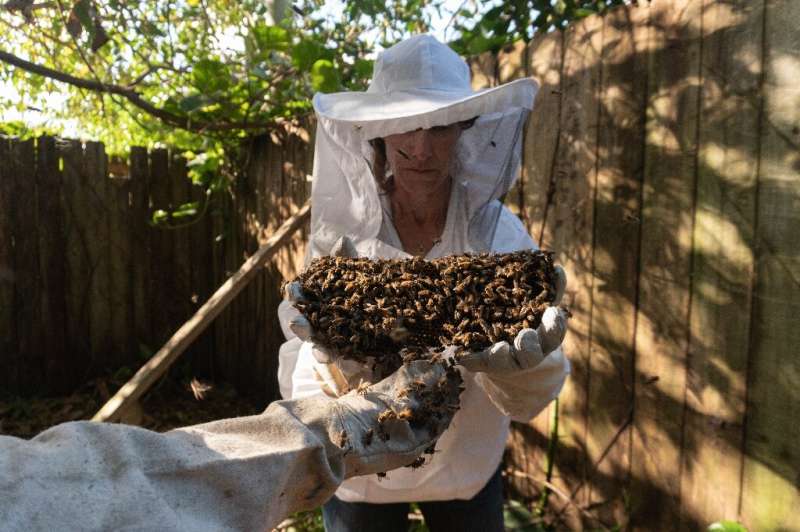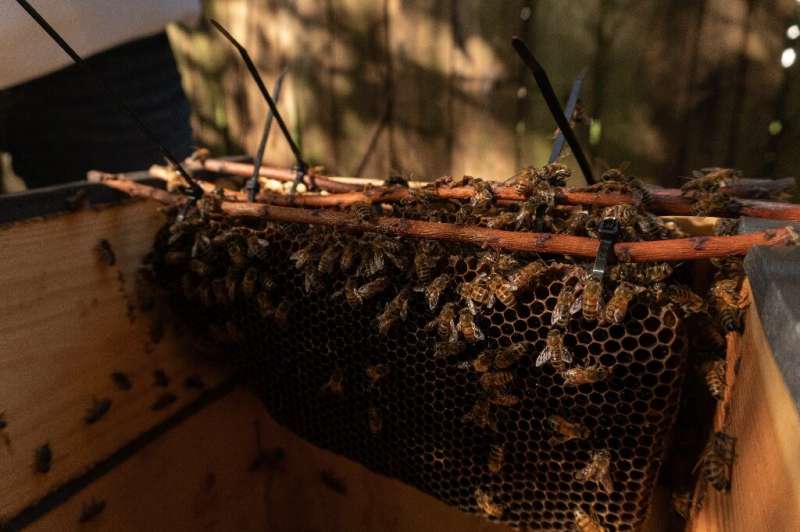This article has been reviewed according to Science X's editorial process and policies. Editors have highlighted the following attributes while ensuring the content's credibility:
fact-checked
reputable news agency
proofread
For a best friend to Florida bees, each rescue is personal

Melissa Sorokin sees herself as "a bee advocate," deeply passionate about helping to rescue the at-risk creatures that play such a critical role in biodiversity.
Often called in by spooked or concerned residents, she acts as emergency responder for the vital pollinators, spending the substantial time it takes to move threatening or threatened hives to safer locations.
Sorokin, who lives in Florida, says rescuing hives is infinitely better than homeowners or businesses allowing pest control services to swoop in and simply kill the bees.
"If they don't call me, as a beekeeper, they are most likely going to get an exterminator, who instead kills the bees. It's easy, it's quick, it's good money, cheap for them," says Sorokin, 54.
On the other hand, "I'm like a bee advocate, a bee tender," she says. "I love them. And I have a friendship with them."
Sorokin's mission is vital, she adds, because bees are under threat from climate change, pesticides, large cultivation of single crops, urbanization and invasive species.
The honey bee population is in freefall. A December study from Penn State University found that the United States experienced a 43 percent colony loss between April 2019 and April 2020.
The knock-on effects are immense, with the US Food and Drug Administration noting that about one third of food eaten by Americans comes from crops pollinated by honey bees, including apples, melons, cranberries, pumpkins and broccoli.

On a sunny afternoon, Sorokin heads to a client's garden in Coral Gables, near Miami, to remove a beehive.
She first scouts out the place where she suspects the bees are hiding: a shed attached to a house.
Once the presence of the insects is confirmed, she burns pieces of wood in a smoker, dons a mesh head net, and blows smoke into the shed's eaves to calm the bees.
She then grabs a chainsaw and cuts a wooden rectangle in the roof eave. Pulling back the planks reveals a humming, heaving hive.
Sorokin, wearing protective gloves, carefully removes panels of honeycomb covered with bees, and places them like racks in an artificial hive.
The process takes about five hours.
"It's not very complicated to move bees. They sleep at night. So you can move them at night or you can move them in the morning keeping everything nice and close," she explains.
"My goal, my wish," is to help the bees, she says. "I hope that they have a better life with me because I help them."
When Sorokin finishes transferring the insects from the shed, she closes up the new box hive and takes it to her car, where she straps it in with a seat belt.
© 2023 AFP



















